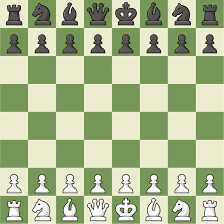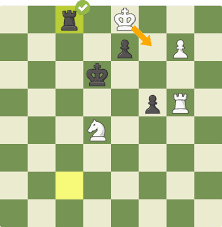Instead of letting the decision making process take away precious moments of your day, you can make it more efficient with a strategy called retrograde analysis. If you’re an avid chess player, retrograde analysis may sound familiar to you – and you may be surprised to see it here.
What is Retrograde Analysis?
Retrograde analysis is a strategy used in game theory to help make decisions early on to get the outcome you want. Applying this strategy to your decision making process can give you an edge against intimidating decisions you have to make. Retrograde analysis is used for working backwards from the end of a game to the game’s starting state.[2] This strategy involves tracing moves backwards in order to determine what moves led to a desired outcome.[3] We can apply this way of thinking to our daily decisions.
Retrograde Analysis in Chess
Chess grandmasters use retrograde analysis to study the ending moves in a chess game. They study this point of the game for two reasons: By applying retrograde analysis, chess players can plan their moves from the beginning in order to win the game. Similarly, you can apply retrograde analysis to figure out your end moves in your decisions and to help you make decisions that will steer you toward your end goal. To explain retrograde analysis more clearly, let’s get into the perspective of a chess player. Imagine that you are sitting with a chess board in front of you. Your opponent is playing with the white pieces and you are playing with the black pieces. You see all 32 chess pieces before you, each with their own rules regarding how they can be moved. Your opponent’s king, the piece you need to take out in order to win is safe and snug behind an army of pieces capable of thwarting your advance. While you ponder how to breakdown your opponent’s defense, you also remember you need to protect your king.
Given the offense and defense objectives of chess and the pieces you and your opponent both have at your disposal, there are countless ways that this game can go. Luckily, in order to prep for this chess game, you did retrograde analysis. You studied a game where you had your previous opponent’s king cornered with a rook (a checkmate!). Your previous opponent’s king then had limited places to go.
Knowing that this is the outcome that you want, you can now narrow down the possible moves in the present game. Instead of holding tons of starting moves and subsequent moves in your head, you can focus on utilizing other pieces besides your rook in order to have that piece available to use for the eventual checkmate. You can also choose not to move your king piece too far in order to keep it safe. By examining how you want the chess board to look like, you know which pieces to hold off on utilizing or moving (your king and rook), and which pieces to use initially (the other pieces). Then you will be able to narrow down the options for pieces to move first. While applying retrograde analysis in real life can be a lot more complex compared to in a chess game, the point here is to understand how to narrow down your current options by first visualizing your outcome to think backward.
How to Use Retrograde Analysis to Solve Complex Problems
Retrograde analysis sounds great for chess, but what about real life problems? Here are a few scenarios where you can apply retrograde analysis.
Example 1: Planning an Event at Work
Say you are put in charge of planning a large-scale event at work. A ton of questions may be raised by you and your team: Do we want it indoor or outdoor? How’s the parking situation? How many people can we fit – and that being asked, who should we invite or not invite? Many moving parts are going into this event, just as there are many pieces on a chessboard. If you’re feeling overwhelmed at this point, take a deep break and reel yourself back – try retrograde analysis. Don’t be intimidated by an event of this size – think about the major components of the ideal event. Say that you need to find a venue for July. From here, you can imagine an outdoor event to enjoy that beautiful summer weather. Having the event outdoors then gives you a framework to base your next decisions on. For example, now that the event will be outdoors, you can make decisions about the type of activities that could happen during your event. You could also get a better idea of logistics, such as knowing how many people can be invited based on the size of the venue and available parking. At this point, you know the outcome that you want, and so you are just filling in the moves to get there.
Example 2: Reaching a Career Goal
Getting a promotion is an exciting but also admittedly stressful goal to work toward. Part of that stress comes from not knowing where to start making your moves to stand out to your higher ups. While planning your moves first may feel like the most natural way to start, try retrograde analysis. In this case you know your desired outcome – a promotion. From there you start your process of thinking backwards. For example, when would a promotion typically happen in your line of work? Say you estimate that should be around five years – you now have a timeline that you can use to plot out your moves. Notice how retrograde analysis focuses on what the most relevant and outcome-oriented “moves.” This effectively prevents you from being caught up in decisions that would either distract you from your end goal or set you down the wrong path. At this point, you may have noticed another important benefit of problem solving with retrograde analysis: the connection to intention. By thoroughly understanding the decisions made at different points of a problem solving process and figuring out how to optimize these decisions for the desired outcome, your actions can be more insightful. [4]
Bottom Line
Retrograde analysis is not only great for upping your chess game, but it can also vastly improve your problem solving process. This strategy helps keep your desired outcome at the forefront of your decisions, and also helps you critically think about the choices that could potentially lead to this outcome. The next time you find yourself facing a complex problem try using retrograde analysis – you may find that getting to where you want to go is easier than you thought. Featured photo credit: Wander Fleur via unsplash.com

